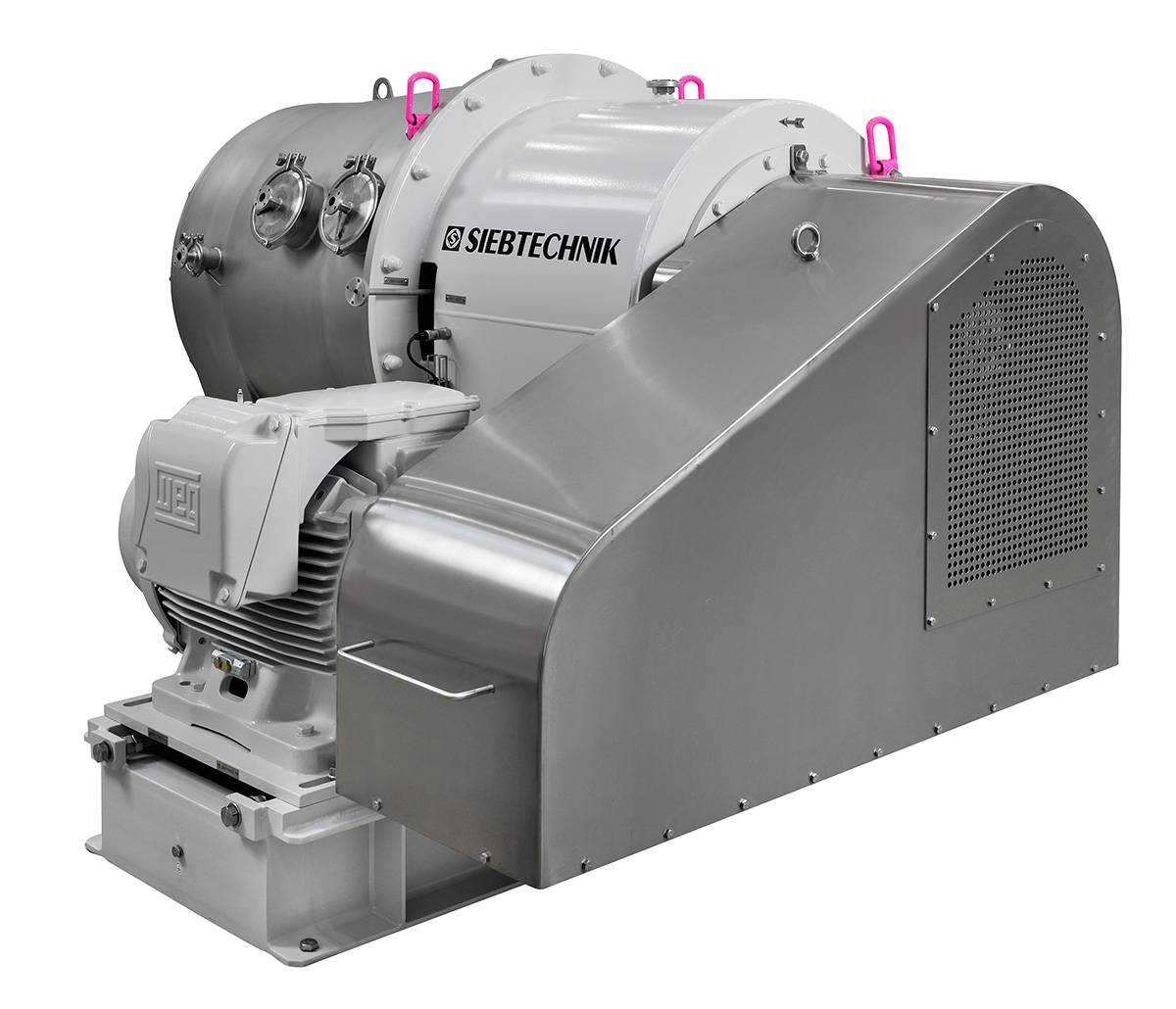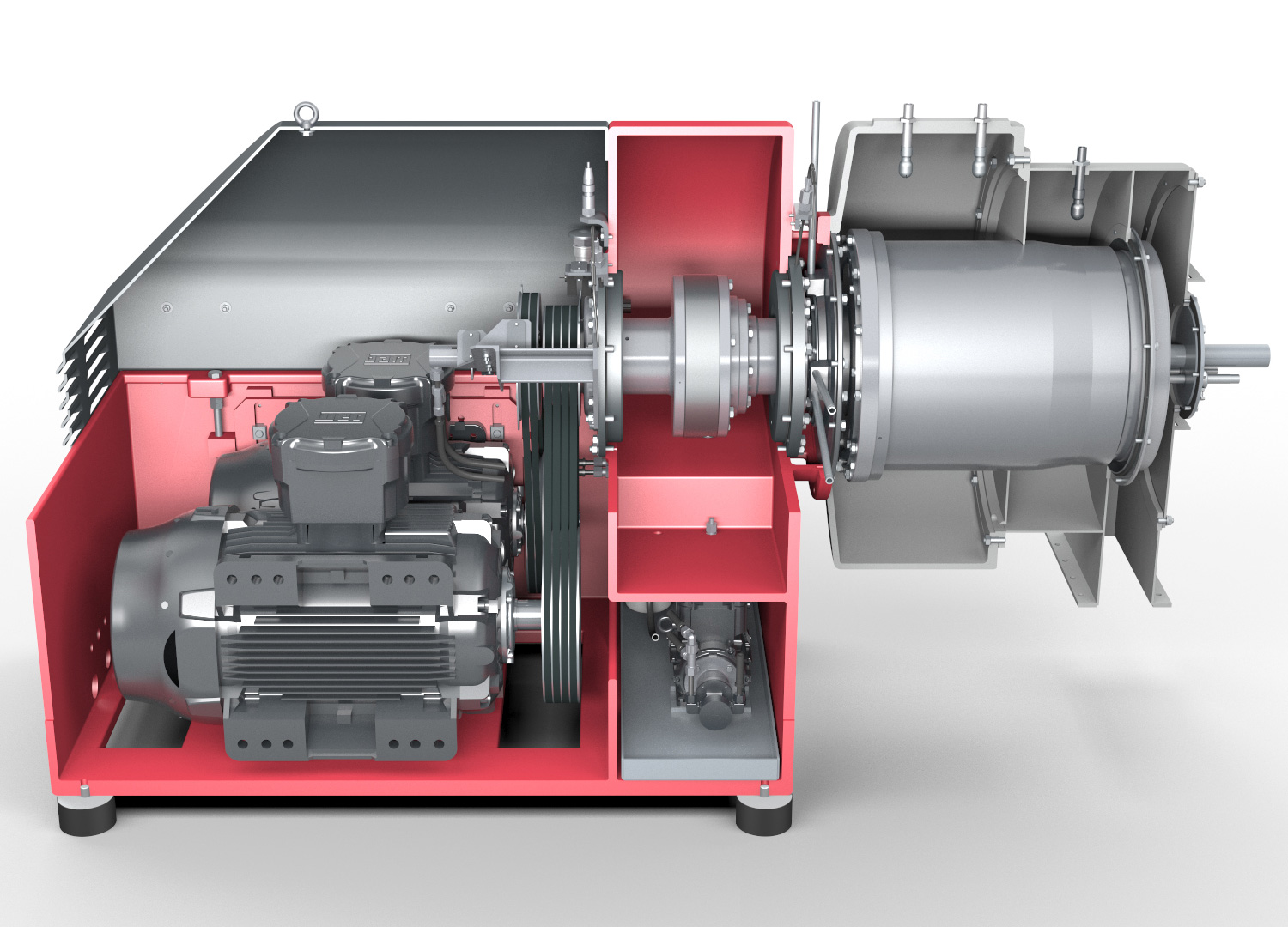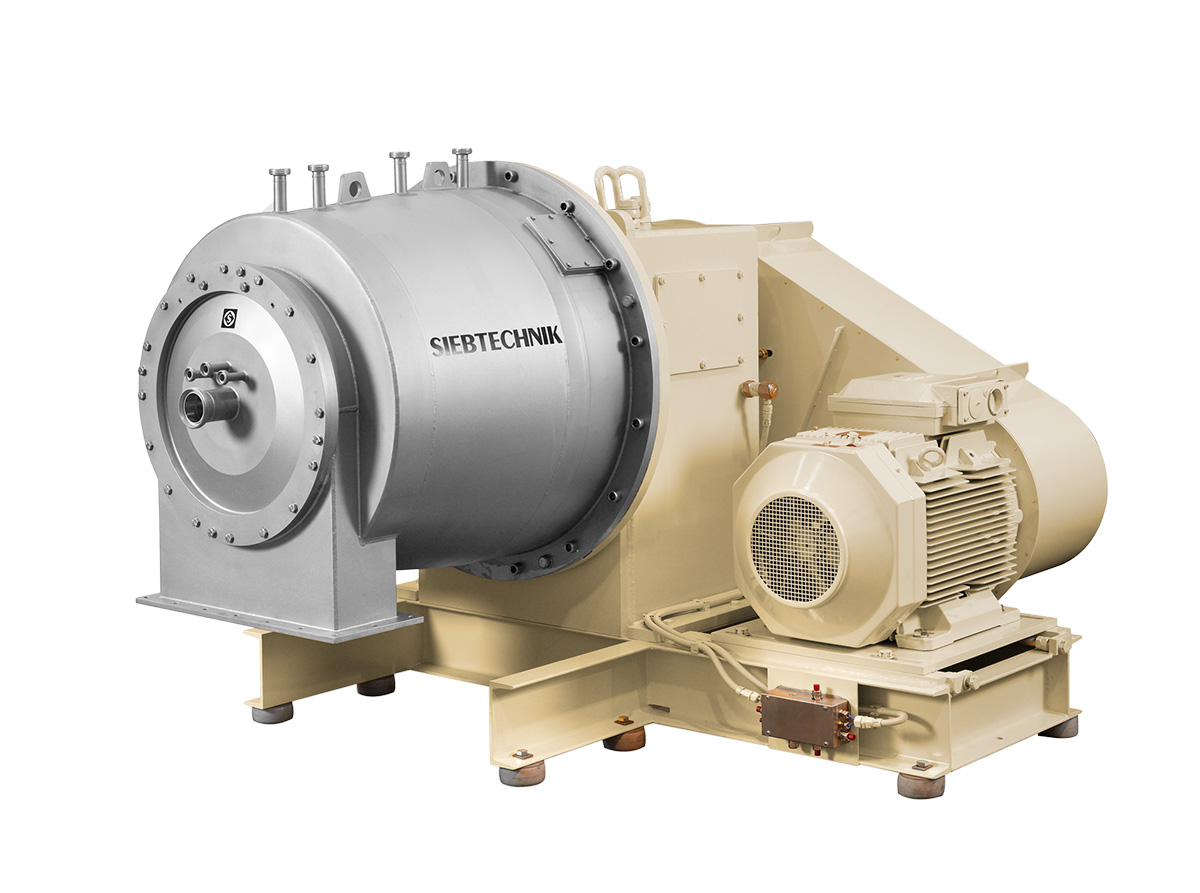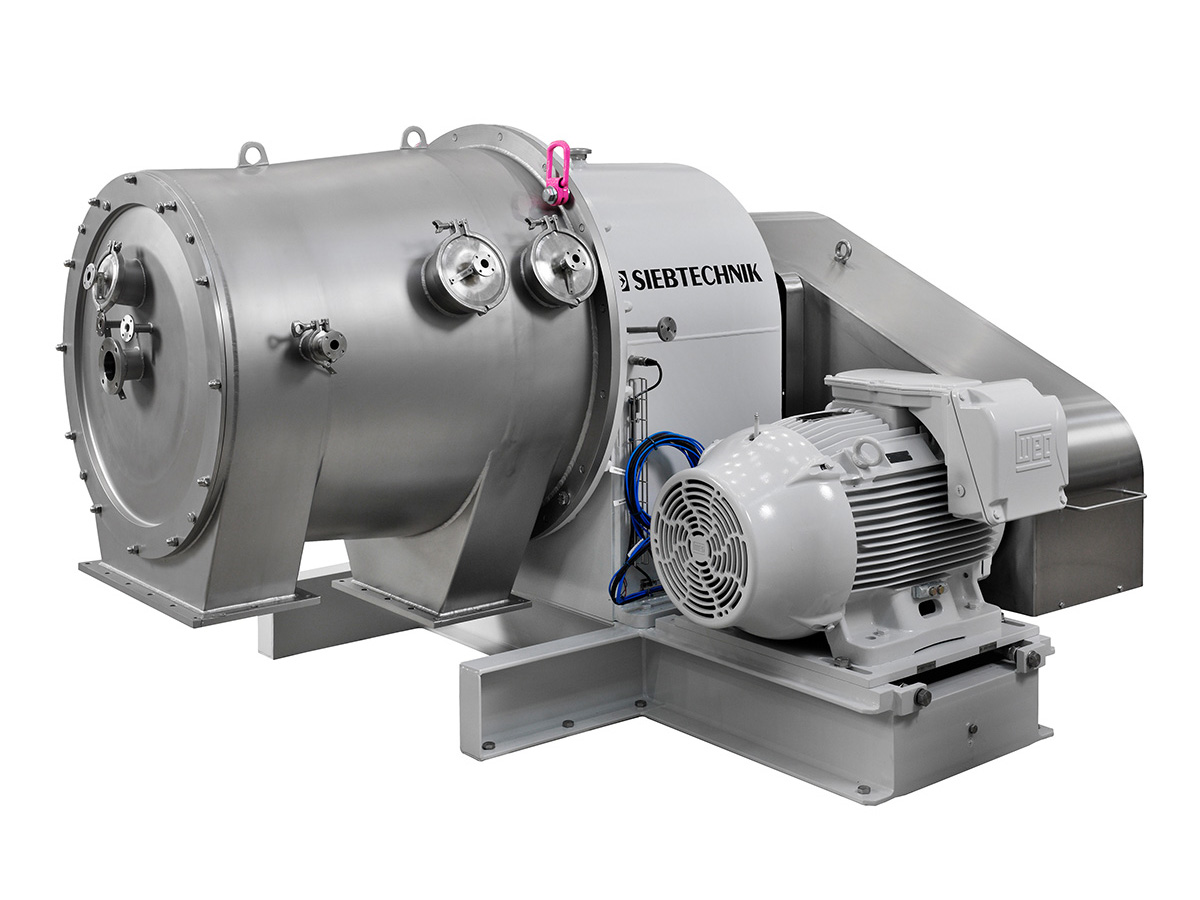SHORTBOWL decanter centrifuge
SHORTBOWL decanter centrifuge
As long as necessary – with enormous advantages
The SHORTBOWL decanter centrifuge is designed overhung-mounted. Because of the special geometry of the rotating parts it is highly suited for the separation of fine solid particles having a specific gravity that is very different from the liquid phase.
The design principle with its strict separation of process and drive unit makes this decanter ideal for applications in pharmaceutical or food manufacturing operations (CIP standard). This machine concept also means that the decanter can be used in high-temperature areas or for pressure-tight processes.
From laboratory standard through to rough work in the primary materials industry the SBD decanter is ideally suited. Versions in special materials, explosion protection and inert gas overlay or hot gas blanketing have been part of our offering for over 50 years. We also increase operational reliability by fitting oil-circuit lubrication for all bearings, including gear unit and worm bearings. We also offer this version with USDA certification.
Product washing can be more advantageously carried out than with normal decanters.
Operational behaviour and mechanical characteristics
On this solid bowl centrifuge the rotating parts are especially advantageously overhung-mounted.
The centrifuge rotor ends behind the partition wall of the solid matter discharge chamber and so guarantees a free and unobstructed discharge of solid matter from the product housing.
The SHORTBOWL is designed for solids with good sedimentation behaviour, i.e. for fine solid particles having a specific gravity that is very different from the liquid but also for solids with sufficient particle size and sedimentation tendency in the available dwell time. The short design has already proved to be an advantage for the classification of solid particles. Despite the relatively short solid bowl, in the right application the SHORTBOWL is a continuous high-performance centrifuge giving optimum separating results.
To separate the solid matter from the liquid, the suspension is conducted into the feed chamber of the worm element through an inlet pipe. From there the product passes through apertures into the centrifuge bowl and is accelerated to peripheral speed. At many times gravitational acceleration the solid matter settles on the inner surface of the bowl and is conveyed by the conveyor worm to the discharge end of the conical part of the bowl.
The filling volume in the cylindrical part of the solid bowl and so the length of the dewatering section in the conical part is preset by means of adjustable weir plates.
The correct ratio of clarification section to drying section must be determined for the specific product in preliminary tests or in normal operation.
Drives for centrifuges
The solution to a separation task depends very decisively on the centrifuge drive. The centrifugal force required for solid-liquid separation is determined by the bowl or screen speed. To achieve the right speed for optimum separating results, it is frequently necessary to keep the speeds variable. The drive control needed for this is designed by our specialists specifically to fit your application.
Furthermore, on screen worm centrifuges and in decanters the speed differential between the solid-conveying worm and the bowl is decisive. It determines the time which the solid spends in the centrifuge and so the quality of the drying. The correct speed differential for your separation task is determined by the correct choice of gear unit. The speed differential here may be constant, but may also be variable. In the latter case the back-drive, where the otherwise fixed gear input shaft is also driven, is used. If the worm speed is required to be kept completely independent of the drum speed, hydraulic drives (viscotherms) or two-stage gear units with an upstream differential planetary stage are used.
To guarantee the operational reliability of your centrifuge, the drive system is continuously monitored. Excessive speeds, overcurrent and slip are identified and reported to the machine control system and there processed.
Only a drive system specially designed for your separating task will give optimum separating results.
Explosion protection / inertising
Explosion protection/inertising
Inertisation of our machines and systems may be necessary for various reasons. In many industrial processes it is necessary for safety reasons to reliably prevent the build-up of an explosive atmosphere through dust or gases (ATEX).
It may also be necessary to seal and overlay the product spaces with inert gas, e.g. nitrogen (N2) or carbon dioxide (CO2), to prevent oxidation and maintain product quality.
Use SIEBTECHNIK specialialists’ many decades of experience in all areas of industry to help seal and inertise the process spaces in your centrifuges.
We will be pleased to work with our customers to draw up an inertising concept for the integration of our machines into existing or scheduled plant systems.
Hygienic Design / CIP
The name SIEBTECHNIK is inseparably associated with dewatering tasks to meet the most stringent hygiene requirements. The separation of batter from frying oil at temperatures of approx. 200°C with the SHORTBOWL decanter centrifuge, the centrifuging of lactose crystals with the SHORTBOWL decanter centrifuge and the CONTURBEX screen worm centrifuge for the manufacture of baby food or the manufacture of extremely pure inorganic salts with our CONTURBEX and pusher centrifuges are some examples. Design features for this are the technical separation of the drive and processing sections of the centrifuge and highly developed sealing systems that are easy to clean by CIP.
For the optimisation of centrifuges in the hygiene sector and/or in areas where e.g. cross-contamination has to be prevented by CIP we use riboflavin tests to examine and optimise cleaning results.
Our self-developed and USDA-certified CIP nozzles, self-developed hygienic screw connections, special hygiene surfaces or our highly developed USDA-conformant sealing technology make many dewatering tasks possible only with our centriguges.
Service
Our reliable service enables optimum operation of your machines and systems. We offer energy optimisation, machine monitoring, an on-site maintenance and & repair service, OEM spare parts, damage cause analysis, maintenance & repair kits, stock inventory analysis, machine history management, personal technical consultation, training & workshops, 24 hr service, retrofitting & upgrades and used & loan machines.
Ask us, we’re there for you.
System solutions
SIEBTECHNIK TEMA has consistently developed itself into one of the world’s most innovative manufacturer of continuous centrifuges and suppliers of system solutions in the field of mechanical and thermal solid-liquid separation since the early 1940s. SIEBTECHNIK/TEMA is your reliable partner for customer-focused, custom-built machines and system solutions.
SIEBTECHNIK TEMA centrifuge and drier systems offer you the latest technology, customer- and product-specific special fittings and individual consultation at the pre-sales stage and reliable support in the after-sales process. For mechanical liquid separation continuously operating centrifuges are often the technically and economically best solution. They separate large volumes in closed housings with little space requirement and low energy and time costs. Also drying on the fluidised bed with fluidised bed driers and coolers has established itself in numerous branches of industry and applications.
Advantages
- Continuous operation
- Overhung-mounted
- Short design
- Free and unobstructed discharge of the solid matter from the product housing
- High-temperature versions
- USDA versions
- Better product washing than in normal decanters
- Flexible drive concept
- High machine availability
- Minimum maintenance
- Long service life



















